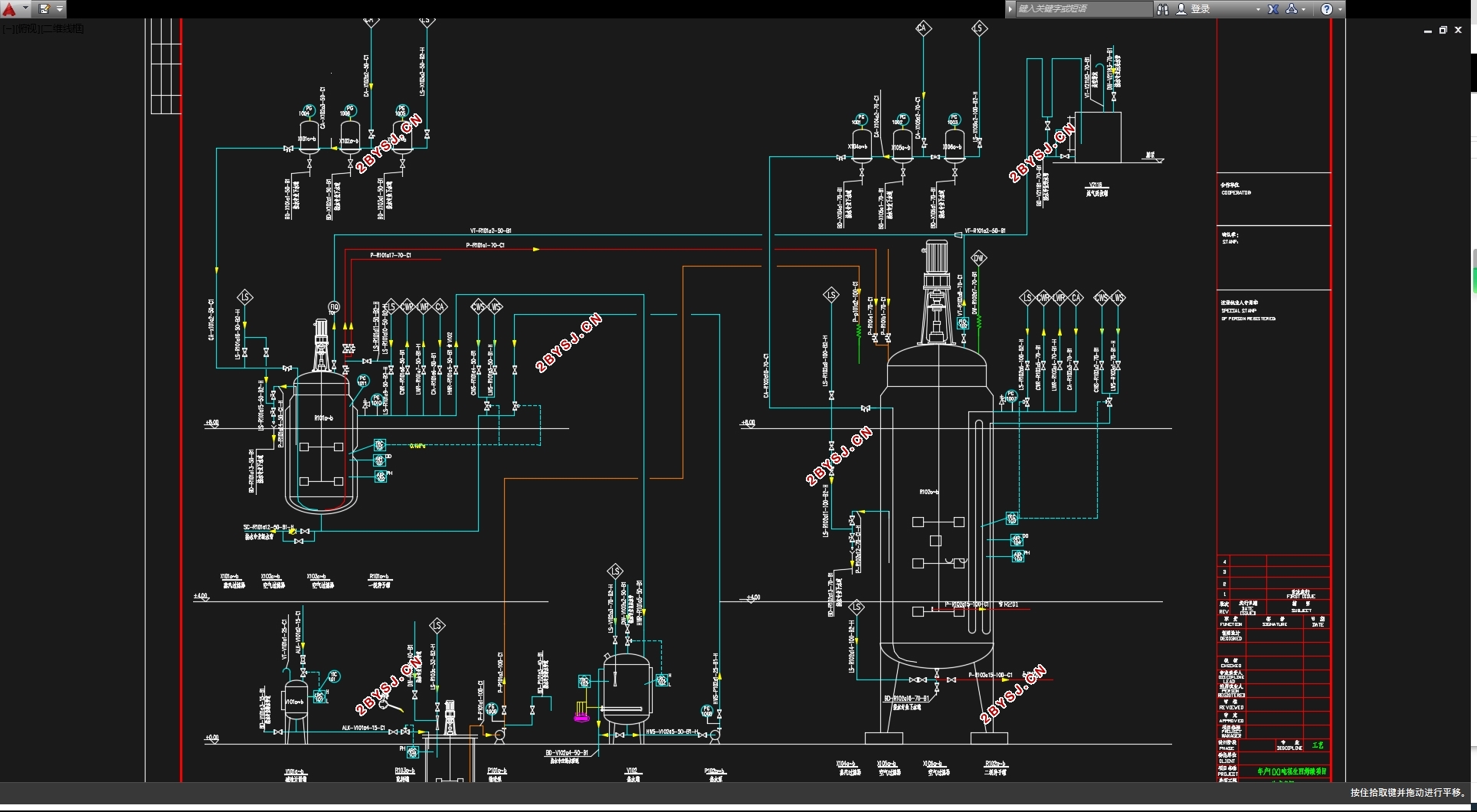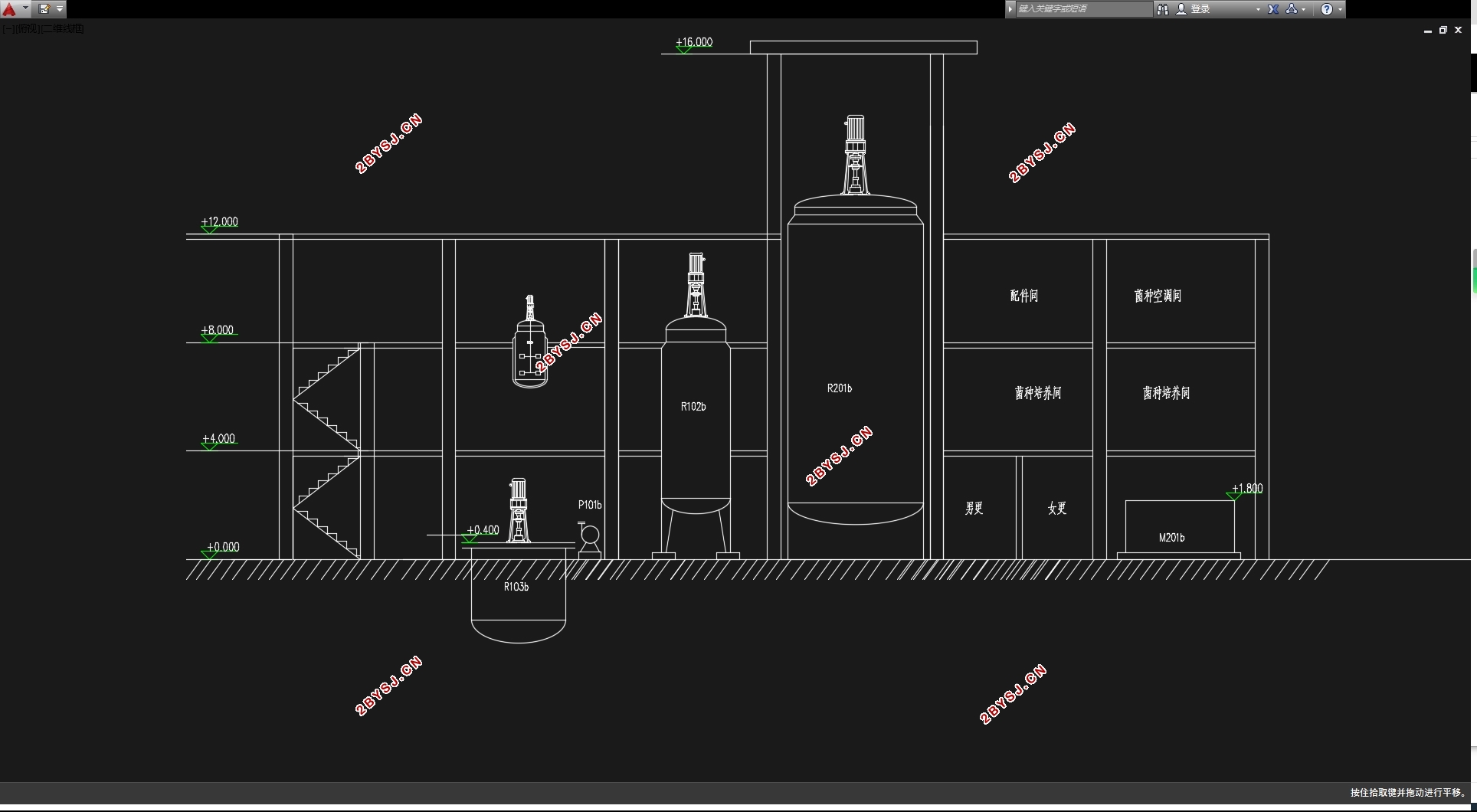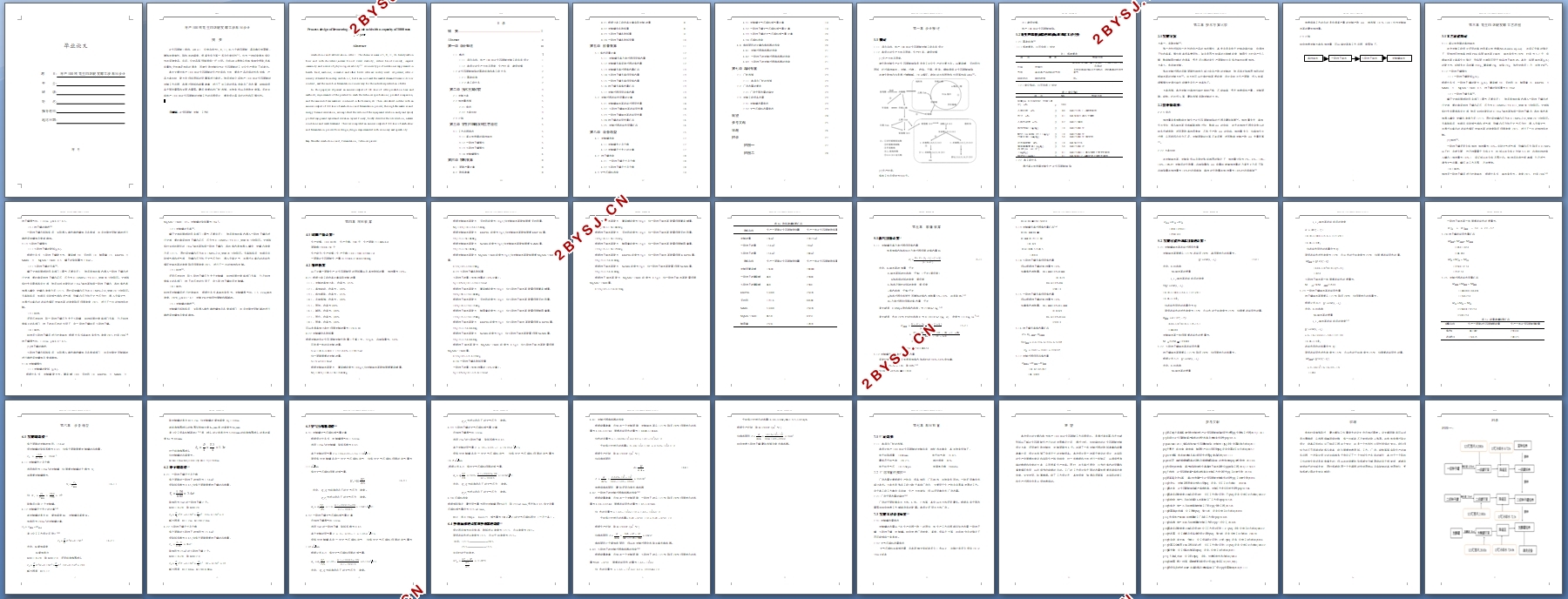年产100吨花生四烯酸发酵工段车间设计(含CAD图)
无需注册登录,支付后按照提示操作即可获取该资料.
年产100吨花生四烯酸发酵工段车间设计(含CAD图)(任务书,开题报告,论文说明书9000字,CAD图6张)
摘 要
花生四烯酸(简称:ARA),化学名称为5, 8, 11, 14-二十碳四烯酸,具有酯化胆固醇、增加血管弹性、降低血液黏度、提高免疫力等一系列生理活性[1]。作为一种新型营养强化剂在保健食品、医药、化妆品等领域得到广泛应用。目前ARA通常从深海鱼油中提取,但其含量低,无法满足市场的需求,而微生物发酵则为花生四烯酸的工业化生产提供了新途径。
本文主要对年产100吨花生四烯酸的生产时间和方法,要求产品达到的技术规格,产品方案比较,配方中所含原料的用量等进行阐述。然后详细介绍年产100吨花生四烯酸的发酵工艺流程,再通过物料和能量衡算,进行了该工段的设备选型及厂房布置,绘制成设备平面布置图和立面布置图。最后简要叙述厂址选择、自然条件以及废物处理等。至此完成年产100吨花生四烯酸的发酵工艺的流程设计,要求设计具有经济性和可操作性。
关键词:花生四烯酸 发酵 工艺流
Process design of fermenting Arachidonic acid with a capacity of 1000 tons per year
Abstract
Arachidonic acid(abbreviation:ARA),The chemical name is 5, 8, 11, 14- twenty carbon four acid with cholesterol,increase blood vessel elasticity, reduce blood viscosity, improve immunity and a series of physiological activity[1]. As a new type of nutritional supplements in health food, medicine, cosmetics and other fields ARA are widely used. At present, ARA is usually extracted from deep sea fish oil, but it can not meet the market demand because its low content , and the microbial fermentation is a new way for the industrial production of ARA.
In this paper,we expound an annual output of 100 tons of ARA production time and methods, requirements of the product to reach the technical specifications, product comparison, and the amount of raw materials contained in the formula, etc. Then introduced in detail with an annual output of 100 tons of arachidonic acid fermentation process, through the material and energy balance calculation, accomplished the section of the equipment selection and plant layout, plotted equipment layout and elevation layout. Finally, briefly describes the site selection, natural conditions and waste treatment. Thus we completed an annual output of 100 tons of arachidonic acid fermentation process flow design, design requiremented with economy and operability.
Key Words: Arachidonic acid; Fermentation; Technical process





目 录
摘 要 Ⅰ
Abstract Ⅱ
第一章 设计概述 III
1.1 概述 1
1.1.1 项目名称:年产100吨花生四烯酸发酵工段车间设计 1
1.1.2 本设计的生产方法及原理,生产时间,建设规模 1
1.2花生四烯酸油脂的国家标准和本工段任务 2
1.2 .1国家标准 2
1.2 .2本工段任务 2
第二章 技术方案比较 3
2.1发酵方案 5
2.2接种量选择 5
2.2.1简述 5
2.2.2方案比较 3
2.3小结 6
第三章 花生四烯酸发酵工艺流程 5
3.1工艺流程简述 5
3.1.1高山被孢霉的菌种培养 5
3.1.2一级种子罐操作 5
3.1.3二级种子罐操作 6
3.1.4发酵罐操作 6
第四章 物料衡算 8
4.1 周期产量计算 8
4.2 物料衡算 8
4.2.1根据分离工段收率计算实际发酵液量 8
4.2.2发酵罐中各物料量 8
4.2.3二级种子罐各物料量 9
4.2.4一级种子罐各物料用量 10
第五章 能量衡算 11
5.1蒸汽用量计算 12
5.1.1 发酵罐灭菌升温过程所用蒸汽量 12
5.1.2发酵罐灭菌保温过程的蒸汽量 12
5.1.3发酵罐灭菌过程蒸汽量汇总 13
5.1.4二级种子罐灭菌所用蒸汽量 13
5.1.5一级种子罐灭菌所用蒸汽量 13
5.1.6种子罐灭菌蒸汽量汇总 13
5.1.7发酵过程所用总蒸汽量 13
5.2 发酵过程冷却水用量的计算 14
5.2.1发酵罐培养基冷却过程用水量 14
5.2.2 二级种子罐培养基冷却用水量 14
5.2.3一级种子罐培养基冷却用水量 15
5.2.4种子罐冷却用水量汇总 16
5.2.5 发酵过程冷却水用量汇总 16
第六章 设备选型 15
6.1 发酵罐选型 17
6.1.1发酵罐大小及个数 17
6.1.2发酵罐尺寸大小的计算 17
6.2 种子罐选型 18
6.2.1 一级种子罐尺寸及个数 18
6.2.2二级种子罐尺寸及个数 18
6.3空气压缩机选型 19
6.3.1发酵罐空气压缩机排气量计算 19
6.3.2一级种子罐空气压缩机排气量计算 19
6.3.3二级种子罐的空气压缩机排气量计算 20
6.3.4压缩机选型 20
6.4 换热面积的计算和换热器的选型 20
6.4.1 发酵过程换热器的选型 21
6.4.2 一级种子液发酵过程换热器的选型 21
6.4.3 二级种子液发酵过程换热器的选型 21
第七章 车间布置 23
7.1 厂址选择 23
7.1.1 本项目厂址的选择 23
7.2 厂房布置的要求 23
7.2.1厂房平面布置的确定 23
7.3 发酵工段设备布置 23
7.3.1发酵罐布置简述 23
7.3.2空气压缩机布置简述 23
展望 24
参考文献 25
致谢 26
附录 27
附图一 27
附图二 28
